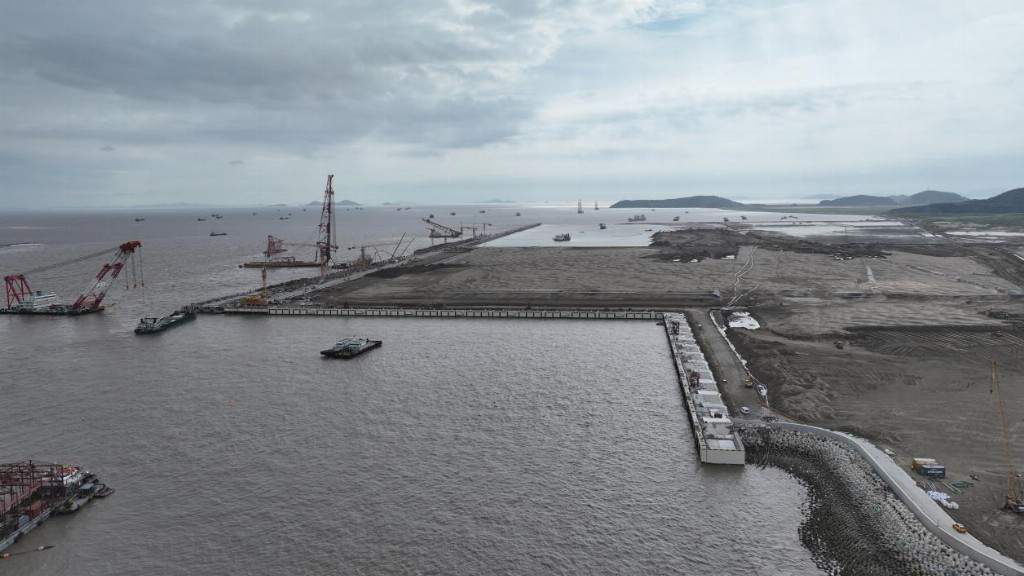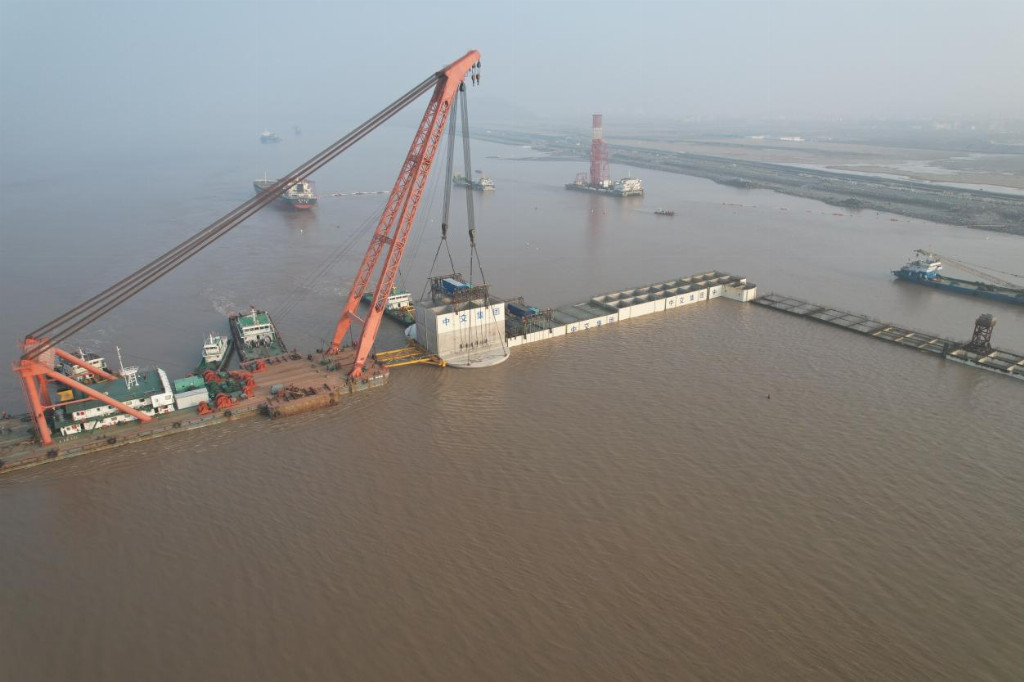
The Xiaoyangshan North Operation Area is an important component of the Yangshan International Container Hub Port Area of Shanghai International Shipping Center, and will be built into the largest single automated terminal in Shanghai Port. After the completion of the project, it will bring 6100 meters of new coastline to Shanghai Port, including 5500 meters of container terminal coastline, including 7 70000 ton and 15 20000 ton container berths. The designed annual throughput capacity is 11.6 million TEUs, opening up new space for the construction of Shanghai Port and Shanghai International Shipping Center.
The work ship terminal for this acceptance is the first pilot project to start construction in the Xiaoyangshan North operating area. It is located on the west side of the Xiaoyangshan North container terminal and adopts a structural form of "sand pile foundation+new bucket foundation+upper cast-in-place breast wall". In addition to being able to dock work vessels, this dock also has anti wave and anti wave functions.

The project team of Sanhang Bureau made bold breakthroughs in technology and innovatively used a combination of bucket foundation structure and sand pile composite foundation to construct a new dock structure form that can be used in soft soil foundation. Compared to traditional gravity docks, using a bucket foundation structure with a self weight of up to 5000 tons as the lower structure can better resist cross flow and high velocity sea surfaces. Compared to traditional gravity docks, there is no stone throwing foundation bed, the process is simpler, and it is also more environmentally friendly.
During the implementation of the project, faced with unfavorable hydrological conditions and climate environment, frequent typhoons and cold waves, the project team proposed for the first time to use self-propelled modular vehicles for on-site handling and drop off operations of bucket foundation structures. The team conducted in-depth research and application of key technologies for asymmetric bucket foundation structures in deep and deep soft foundations in offshore waters, ensuring the smooth installation of 30 bucket foundation structures through measures such as desktop exercises, visual disclosure, and preparation of operation manuals.
The construction of the upper structure is greatly affected by tides, and conventional elevated formwork is easily eroded and damaged by tides. The project team adopted an integral formwork and strictly controlled the tide time, successfully reducing the pouring time of a single bottom plate by 3 hours. The peak daily concrete pouring volume exceeded 500 cubic meters, with an average of 400 cubic meters per day, ensuring the smooth implementation of the upper structure.
The handover and acceptance of the workboat dock is a successful case of using a new type of bucket foundation structure as the lower structure of the dock, filling the technological gap in gravity docks at home and abroad, and providing key support for subsequent projects in Xiaoyangshan North. (Chen Yuankun, Third Navigation Bureau)
